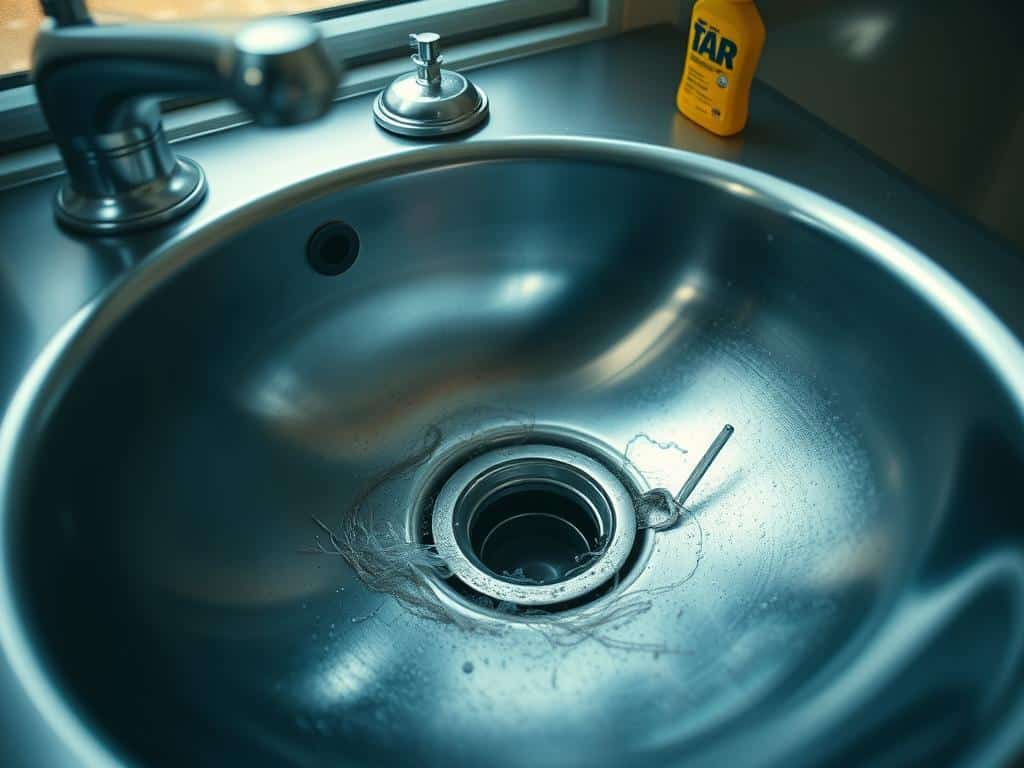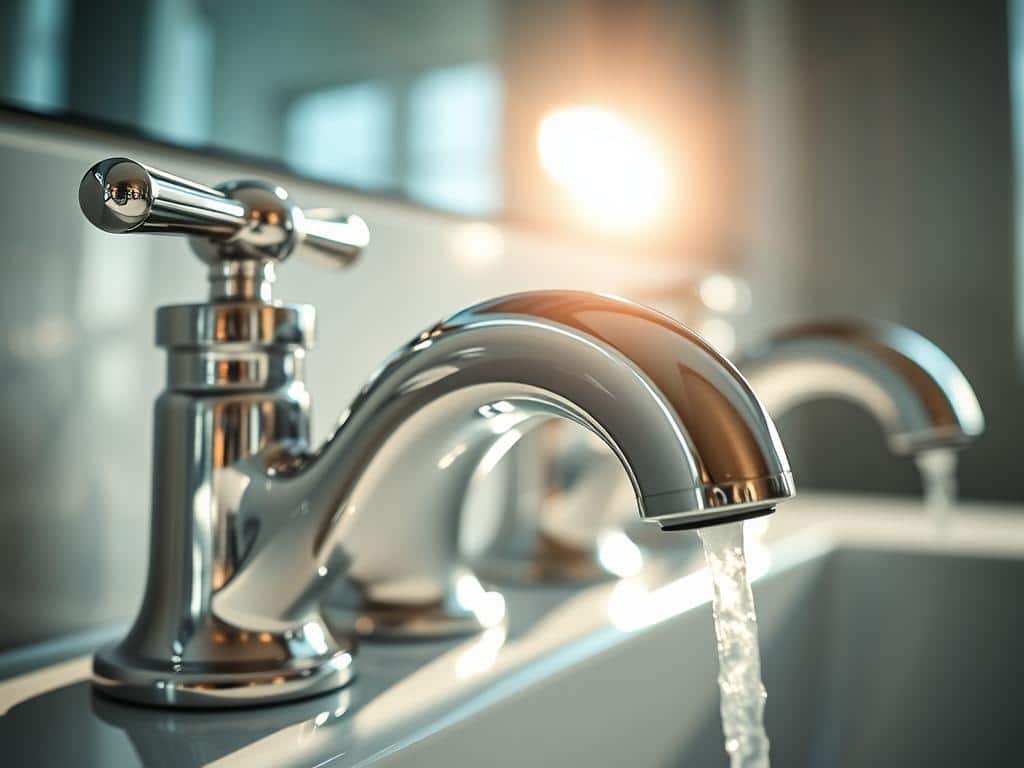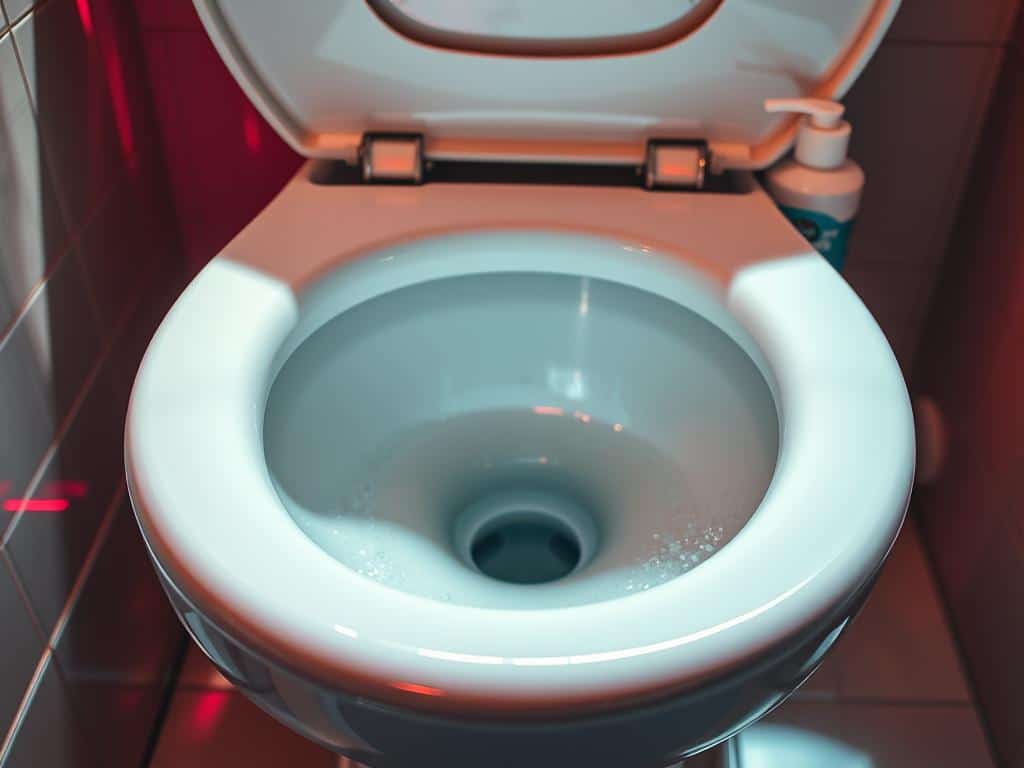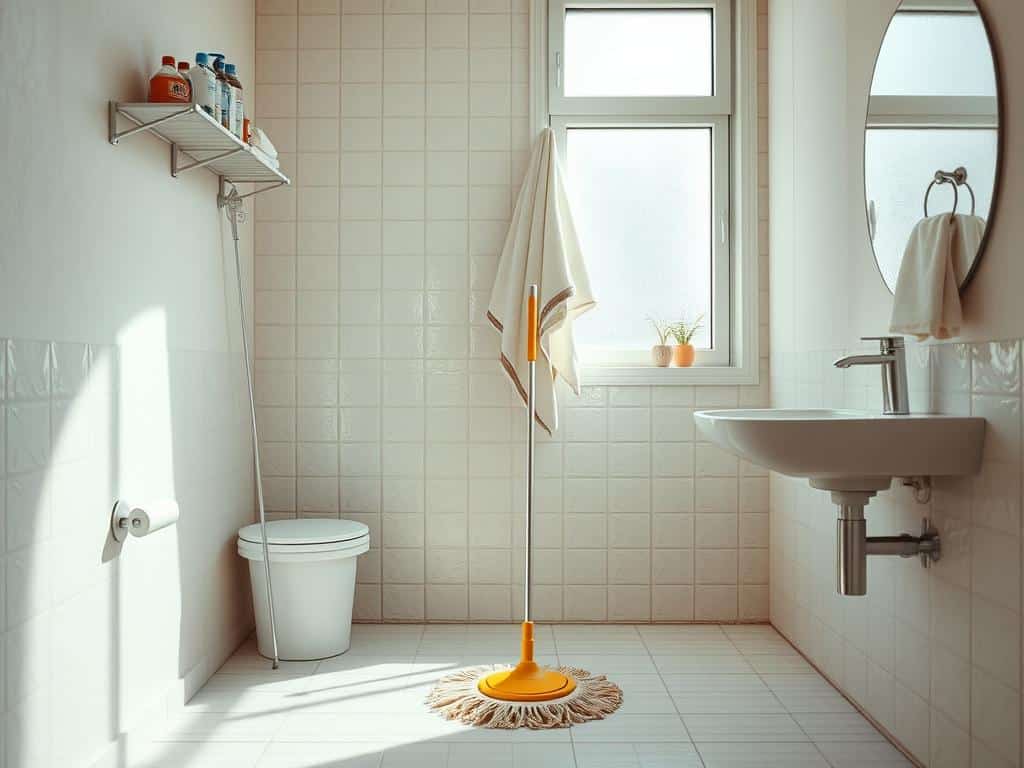
Keeping your bathroom walls clean is essential for good hygiene and health. Charles Gerba, a virology professor at the University of Arizona, says bathrooms can have lots of bacteria. Regular and effective cleaning is important to fight this.
Take care of your grout every six months to stop bacteria from growing. It’s important to clean showerheads too, because they can hold harmful microbes like Mycobacterium avium. Clean sink drains well since they’re often full of bacteria. Following a good cleaning routine makes your bathroom healthier and safer.
Why Cleaning Bathroom Walls is Important
Keeping your bathroom clean is key to a healthy home. Bathroom walls get dirty and germy because of humidity and activities like showering. Small bathrooms get dirty fast, so walls need regular cleaning.
Mold is a big worry. Bathrooms are moist, making them perfect for mold and mildew to grow. This can hurt your health. Using an exhaust fan helps keep walls dry and mold away. It also fights against bathroom allergens that cause breathing problems.
Bacteria such as E. coli can spread when you flush the toilet. They land on walls. Clean walls mean fewer germs spreading to other places. This makes for germ-free bathrooms.
Bathroom walls also collect dust because of the moisture. Dirt and dust stick to wet walls. Soap scum and hard water stains show up near water sources. Cleaning walls often keeps your bathroom looking clean.
Different wall coverings need different cleaning methods. Regular cleaning stops damage and keeps walls looking good. Clean walls make your bathroom healthier and nicer. They stop the growth of bathroom allergens.
Preparation Before You Start
Before you start cleaning your bathroom walls, getting ready is key. Not having the right tools and supplies can make cleaning hard and not thorough. We’ll show you what you need to do to get ready for this job.
Gather Your Supplies
The first thing to do is get all your cleaning supplies together. You’ll need a handheld vacuum or a vacuum attachment for dusting, rubber gloves to protect your hands, and the right cleaners. Use non-abrasive cleaners and a soft brush for tiled walls. For painted walls, use mild soap and water carefully.
Dust the Walls
Dusting the walls well is important to make sure they’re clean before using any cleaning solutions. Start at the top of the walls with a handheld vacuum or a vacuum attachment. Move down, giving extra attention to baseboards to get rid of dust and cobwebs. You can’t skip this step because it gets rid of the first layer of dust.
Protect the Area
To keep from water damage and messes, protect the area where you’re cleaning. Put drop cloths on the floor to catch water and cleaning solutions. This keeps your floors dry and clean while you wash the walls. Moving things away from the walls gives you more space to clean well.
By doing these steps, cleaning will be easier and more complete. For tips on making sure your walls are rinsed well, check out this guide.
Different Methods for Different Wall Types
Understanding the type of wall finish is key in bathroom cleaning. Each paint or wall covering needs its own cleaning way. This makes sure we clean without harming the wall.
Gloss or Semi-Gloss Paint
Gloss or semi-gloss walls are strong and clean easily. Use warm water mixed with a little cleaner or dish soap. Have two buckets ready: one for the mix and another with clean water for rinsing. Clean gently with a soft cloth.
Flat or Matte Paint
Flat or matte finishes are sensitive. Stick to water for cleaning these and avoid strong chemicals. Wipe softly with a sponge and don’t scrub hard to keep the paint safe.
Latex Paint
Latex paint, common in bathrooms, is simpler to clean. Go for gentle cleaners. For hard stains, mix white vinegar with water.
Oil-Based Paint
Oil-based paint might need stronger cleaners. Try ammonia mixed with water for tough spots. Always do a spot test and scrub softly with a soft brush.
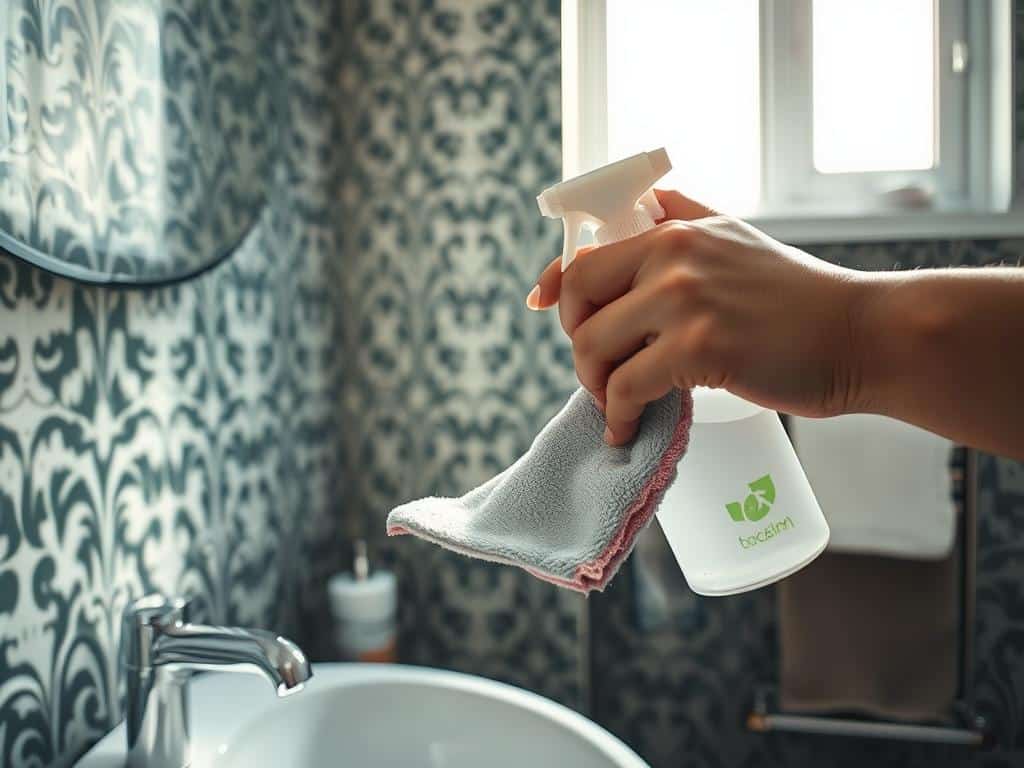
Wallpaper
Handle wallpaper with care to prevent damage. Use warm water and mild dish soap. Apply lightly with a soft sponge, and dry it with a clean cloth to keep moisture away.
Use these specific methods for your wall type to keep your bathroom clean. Test a small spot first and be gentle to avoid damage.
How to Clean Bathroom Walls
It’s important to keep your bathroom walls clean and hygienic. Start by dusting to remove cobwebs and dust mites. Painted walls need dusting monthly, and should be cleaned yearly. Cleaning your bathroom walls regularly helps keep them fresh and stops mold and mildew.
Different wall types need different cleaning methods:
- Glossy or semi-gloss finishes work best with a mix of dish soap and warm water.
- For oil-based paint, use a strong mix of ammonia and water.
- Clean latex or water-based paints with white vinegar and water.
- Use warm water and mild soap for flat or matte paint finishes.
- Vinegar and water mix is advised for tile or natural stone walls.
- 50% bleach and 50% water mix is needed for cleaning mold and mildew.
Here’s a step-by-step cleaning guide:
- Start at the top and work your way down to prevent streaks.
- Use a vacuum or duster to remove dust and spider webs.
- Use a microfiber cloth with warm water and mild detergent for cleaning. Add baking soda for tough stains.
- Remove scuff marks or crayon stains with water and baking soda.
- For specific stains, use the right cleaner. For example, crayon marks go away with all-purpose cleaner and dish soap. White vinegar, baking soda, and warm water tackle smoke stains.
- Rinse the walls with clean water to wash away soap residue.
- Dry the walls with a clean towel to stop mold and mildew.
These cleaning methods make the task easier and protect your wall’s finish. If you need professional help, services like Homefresh offer deep cleaning. Prices range from $40-65 per hour depending on the house size. Mold treatment costs $15-30 per square foot.
Keeping your bathroom clean through regular care ensures a spotless area. This prevents health risks from dirty walls. Consistent dusting, the right cleaning solutions, and keeping surfaces dry are essential for a clean and inviting bathroom.
Tackling Mold and Mildew
Mold thrives in bathrooms due to wet conditions and poor air flow. Finding areas like shower edges, grout, and poorly aired spots is key to stopping mildew. This is the first step to getting rid of mold.
Identifying Problem Areas
Mold loves to grow on bathroom ceilings, walls, and in showers. Black mold, especially Stachybotrys, is harmful and needs quick action. Health problems like allergies and asthma can come from mold, making it vital to spot and tackle these areas.
Cleaning Solutions
For killing mold, bleach is a strong choice. If you prefer something gentler, try vinegar or baking soda. Mixing borax with water works too. Remember to wear safety gear, ventilate the area, and throw away moldy stuff the right way. If mold covers more than 10 square feet, call a pro like PuroClean.
Prevention Tips
Keep air moving, fix leaks, and dry surfaces to stop mold from starting. Using a squeegee after showers helps too. Paint that blocks mildew and adding mildewcide to paint can keep mold away. These steps help in keeping your bathroom mold-free.
Tips for Maintaining Clean Bathroom Walls
Keeping your bathroom walls clean involves more than just weekly cleaning. It also means adopting habits that prevent dirt and grime. It’s important for health and to make sure your bathroom looks good. Cleaning regularly, based on how many people use the bathroom, helps a lot.
To stop mold and mildew, manage moisture. Use a dehumidifier or make sure the room is well-ventilated. This is very important for bathrooms used by many people. Pay extra attention to showers, tubs, and toilets. Use cleaners that kill germs. After showering, leave the door open to stop mildew. Wipe faucets and handles to avoid water marks.
For longer-lasting wall cleanliness, try using car wax on ceramic tiles. This repels water. Choose EPA-approved cleaners for safety but avoid strong chemicals on rust to protect surfaces. Interested in a safer way to clean? Learn about eco-friendly cleaning methods.
Dust regularly and use spray products carefully. Also, change your bathroom linens often. These steps help keep your bathroom walls sparkling with less work. They ensure your space stays clean and welcoming.

